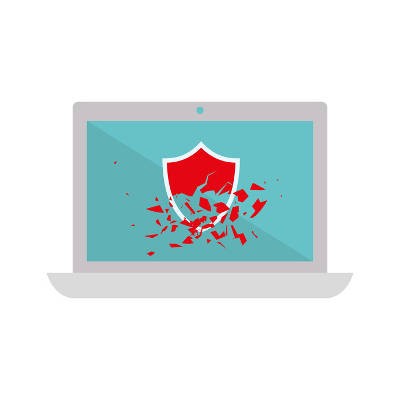JS Business Solutions Blog
As with all innovative technology, there is only a certain amount of time you’ll have until someone inevitably finds ways to exploit it. One such exploitation of a common technology that has flown under the radar and avoided widespread knowledge by users is VoIP fraud. VoIP fraud is no different than other cybercrime - the exploitation of a network or data to procure ill-gotten gains.
We talk about network security a lot, and for good reason. The majority of today’s businesses rely heavily on their information systems and there is plenty of danger presented by Internet-based threats. However, some organizations spend so much time worrying about cyber threats that they forget that physical threats exist outside the technology plane. Your organization needs to take steps toward securing its on-site premise, as well as the digital space in which your business exists.
We are never shy about insisting that certain standards are met when devising passwords, but many major companies are seemingly far less worried about password security than we are. A recent study conducted by the password manager developer Dashlane paints a troubling picture of the state of password security, providing anecdotal evidence in the form of some very well-known and trusted companies scoring at the low end of the password security spectrum.
When it comes to hacking and cybercrime, it can literally be a few seconds that will ruin your business. One single chink in your network’s armor is all it takes for your data to be compromised. Modern SMBs need to take every opportunity to ensure they’re using best practices to help keep their network safe and secure. Here’s a look at four network security bad habits that you and your team can fix today.
Too often, the desire to share an exciting travel destination with the world overrides any security or safety concerns one might have. Even people who are traveling for business will use social media to document their trip as a method of promoting their attendance at the event over social media. This includes photographing and sharing proprietary documents, like boarding passes and passports.
We live in an era where the term “fake news” makes up a significant portion of the headlines. The Internet makes it very easy to misinform others and spread false rumors or news, as you can do so relatively anonymously with little fear of consequence. This has become a problem on social media sites like Facebook, which recently shut down a major “troll farm” in response to continued complaints.
Have you ever thought about what would happen if your IT administrator were to go rogue and create redirects on your website that take your visitors to inappropriate content? Well, it happened to one unfortunate company in Arizona, and it ended poorly for both parties involved. What started as a ransom ended up as four years of probation and a huge sum of cash paid in restitution.
By now, you’ve heard all about the Equifax data breach, which exposed sensitive information of 143 million individuals. To keep this from leading to identity theft and other challenges for these users, many professionals are encouraging them to freeze their credit lines. To do so, a PIN is required, which is something that a hacker can easily take advantage of.
Did you know that a surprising number of data breaches are the result of insider threats? Insider threats are defined as data exposure, either malicious by nature or unintentional, that results from the actions of an employee in your workforce. With so many threats out there, it’s easy to forget that some of the most dangerous are right within your walls. How can you keep insider threats from becoming a major problem for your organization?
How often have you started to read something you thought may be valuable to you, only to put it down a few moments later, completely lost because of the use of technical language and industry jargon? The IT industry can be especially guilty of this. However, since this is need-to-know information, we’ve decided to go over a few crucial security concepts by representing your business security with a locked door.
If you think about it, password security is an interesting phenomenon. The odds are that a user knows the importance of using a strong password, as well as the potential consequences of using weak ones. Yet, time after time, people would rather go with passwords that are easy to type and remember, as opposed to adding a few simple security measures.
Intel has had publicity problems in the past, but now things are getting critical. An issue was reported that could potentially cause the processing power of their chips to diminish. What are being known as the Meltdown or Spectre vulnerabilities, have businesses scrambling around looking for ways to protect their data and infrastructure from what is seemingly an oversight that affects most of today’s CPU architectures; namely those that rely on virtual memory.
When considering your business’ security, it is only too easy to overlook how information of any kind might be compromised. Take, for example, the case study that is provided by the fitness application Strava, the jogging app that shares more data than many, including the United States military, would prefer.
We wish IT security was as simple as setting up a good firewall and installing an antivirus. We talk a lot about security solutions that cover a lot of your bases, such as our Unified Threat Management (UTM) system. While these enterprise-level solutions are important, any investment in protecting your network can be upended by a single act of user error.
The Internet is gaining quite the reputation as a dangerous place. It hosts countless threats, many of which hide behind links that shield their intentions. Considering how much is on the line for your business, you need to make sure that you know which links are safe to click on, and which ones are best left ignored.






















